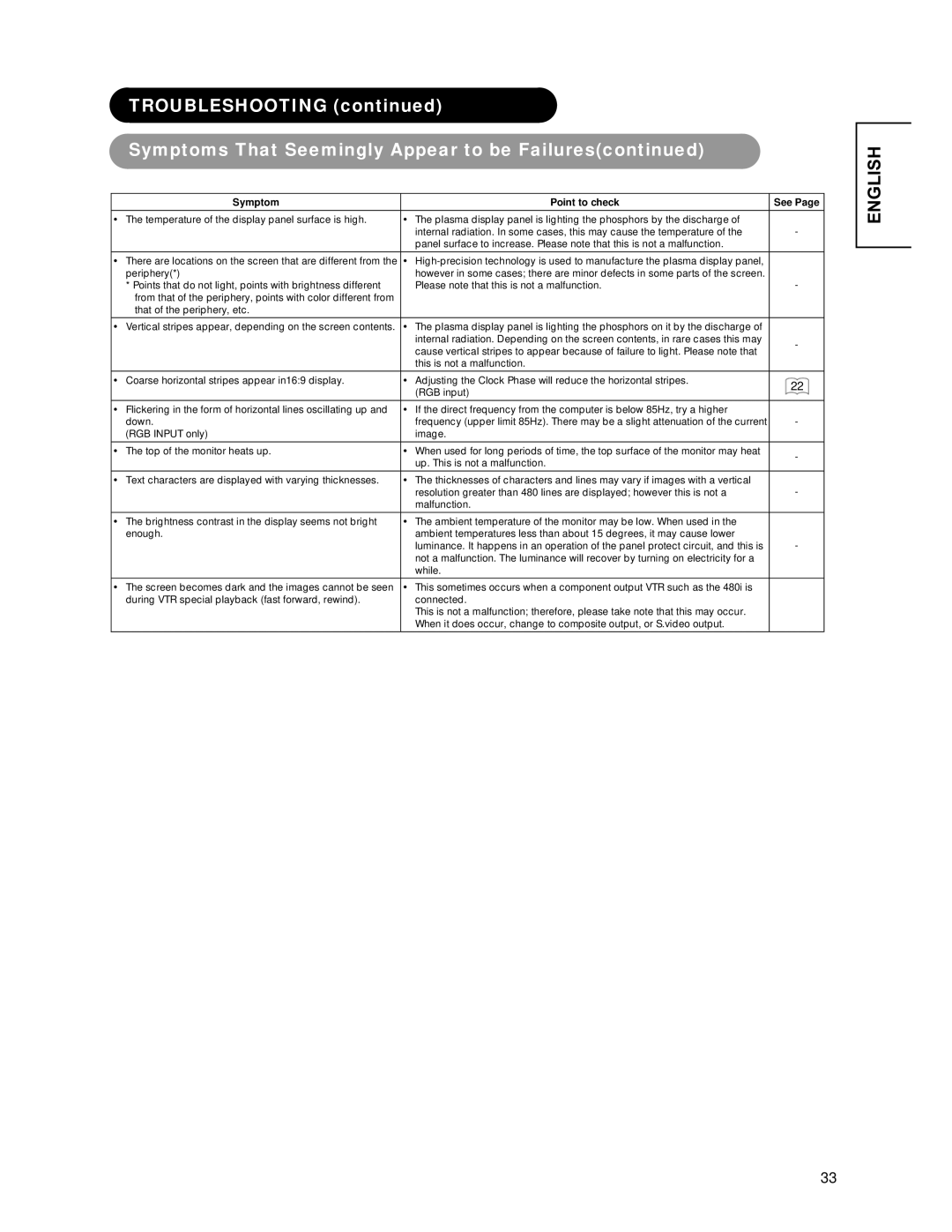
TROUBLESHOOTING (continued)
Symptoms That Seemingly Appear to be Failures(continued)
Symptom | Point to check | See Page |
|
|
|
y The temperature of the display panel surface is high. | y The plasma display panel is lighting the phosphors by the discharge of | - |
| internal radiation. In some cases, this may cause the temperature of the | |
| panel surface to increase. Please note that this is not a malfunction. |
|
|
|
|
y There are locations on the screen that are different from the | y |
|
periphery(*) | however in some cases; there are minor defects in some parts of the screen. |
|
* Points that do not light, points with brightness different | Please note that this is not a malfunction. | - |
from that of the periphery, points with color different from |
|
|
that of the periphery, etc. |
|
|
|
|
|
y Vertical stripes appear, depending on the screen contents. | y The plasma display panel is lighting the phosphors on it by the discharge of |
|
| internal radiation. Depending on the screen contents, in rare cases this may | - |
| cause vertical stripes to appear because of failure to light. Please note that | |
|
| |
| this is not a malfunction. |
|
|
|
|
y Coarse horizontal stripes appear in16:9 display. | y Adjusting the Clock Phase will reduce the horizontal stripes. | 22 |
| (RGB input) | |
|
| |
|
|
|
y Flickering in the form of horizontal lines oscillating up and | y If the direct frequency from the computer is below 85Hz, try a higher |
|
down. | frequency (upper limit 85Hz). There may be a slight attenuation of the current | - |
(RGB INPUT only) | image. |
|
y The top of the monitor heats up. | y When used for long periods of time, the top surface of the monitor may heat | - |
| up. This is not a malfunction. | |
|
| |
y Text characters are displayed with varying thicknesses. | y The thicknesses of characters and lines may vary if images with a vertical | - |
| resolution greater than 480 lines are displayed; however this is not a | |
| malfunction. |
|
|
|
|
y The brightness contrast in the display seems not bright | y The ambient temperature of the monitor may be low. When used in the |
|
enough. | ambient temperatures less than about 15 degrees, it may cause lower |
|
| luminance. It happens in an operation of the panel protect circuit, and this is | - |
| not a malfunction. The luminance will recover by turning on electricity for a |
|
| while. |
|
|
|
|
y The screen becomes dark and the images cannot be seen | y This sometimes occurs when a component output VTR such as the 480i is |
|
during VTR special playback (fast forward, rewind). | connected. |
|
| This is not a malfunction; therefore, please take note that this may occur. |
|
| When it does occur, change to composite output, or S.video output. |
|
|
|
|
33
